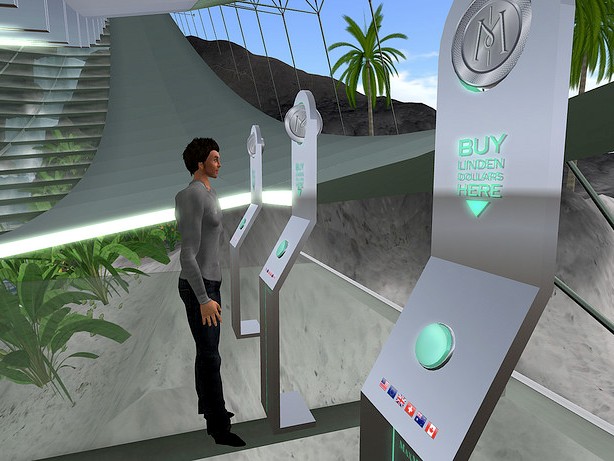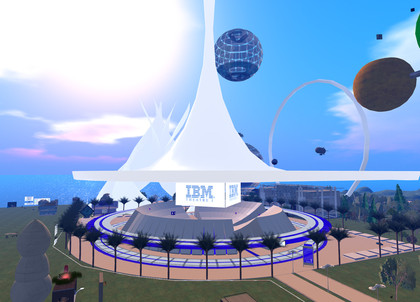Whatever happened to Second Life?
Why the hype didn't help - and where SL's headed now

In the mid-2000s, Second Life was one of the most talked-about things in tech.
Singer/songwriter Regina Spektor used the virtual world to conduct listening parties, while rapper Chamillionaire conducted virtual meet and greets. MTV sponsored in-world fashion shows, tech firms set up training centres and hip brands rushed to set up virtual storefronts; in the real world, Second Life was a business magazine cover star and the subject of breathless dozen-page spreads in tech titles.
Things have changed. SL hasn't been a cover star for a while, and reports tend to concentrate not on exciting new possibilities but on real-world concerns, such as SL creator Linden Lab laying off 30% of its workforce in 2010.
Many brands' stores have been deserted for years, and concurrency - that is, the number of people using the service at the same time - has been slipping. So what went wrong?
Don't believe the hype
Part of the problem is that the gentlemen and women of the press got a bit excited. Tateru Nino, one of the world's leading authorities on Second Life, puts it bluntly: "The media - both tech-press and newspapers/television - worked hard to build up Second Life as something that it wasn't and something that it was never intended to be," she told TechRadar.
"Whether that was out of some low-grade malice or simply because of a complete lack of understanding is an open question. Then they turned around and worked hard at savaging it for not being or becoming those things." Nino can provide plenty of examples.
Sign up for breaking news, reviews, opinion, top tech deals, and more.
With hindsight, much of the coverage was ridiculous: a fairly clunky-looking virtual world where people could hang around, interact and create and/or sell virtual goods, we were told, was "the future of the internet" (CNN), "the future of the operating system" (InfoWorld) and possibly "the future of the academic conference" (The Guardian).
So far, at least, it hasn't proven to be the future of any of those things, and while it remains the biggest virtual world - with user numbers continuing to grow since the hype bubble burst - its user base is dwarfed by real-world social networks such as Facebook and Twitter. Where Second Life currently has around 1 million active users, Farmville claims 35.7 million.
Learning curve
One reason for the Second Life's relative lack of success is its famously steep learning curve. People understand Facebook immediately, but using Second Life for the first time is a bit like being dropped in the middle of a strange city where you don't speak the language and you don't have a guidebook.
As if a steep learning curve wasn't intimidating enough, the endless possibilities and the lack of hand-holding made the whole experience rather off-putting for new users. Despite Linden Lab's best efforts to improve this, the service still struggles to convert new sign-ups into long-term users.
"That's certainly going to continue to be a problem," Nino says. "Second Life is like the web, in that it's a platform in which content can be made, published and interacted with... that translates to a lot of complexity. Imagine you had one software program to browse the web, publish your blog posts, spell-check, IM your friends and co-workers, create and upload art, chat on IRC and all the other things you do in the web-based side of things. How complicated would the user interface for that program be?"
The difficulty for Linden Lab is that the SL viewer, the software you use to navigate the service, needs to balance user-friendliness with power. "That leaves us with a crowded UI full of options I don't need this minute, but I might need a minute later," Nino says.
"Worse, since most new users' only knowledge of Second Life comes from the media, they have no idea what Second Life is when they arrive - or more commonly, they have some completely wrong idea, like thinking it's a game or somesuch."

LOSING INTEREST: IBM was an early adopter and enthusiastic supporter of Second Life, although these days its presence is much smaller than it used to be
Nino reckons SL is more like a public park than a videogame. "It's not going to take you by the hand, lead you somewhere and show you a good time. You're in the park. It's up to you to have a good time, and not ruin things for other park users."
It's been suggested that Second Life should become more like a videogame: the dreaded term "gamification" has been bandied about, with some suggesting that in-world rewards could help smooth new users' path through the park.
"It has worked, to some degree, in the past," Nino says, noting that the newly-launched Second Life social network helps too by making it easier for users to connect and stay in touch with each other. Ultimately, though, "it's the in-world experience that keeps people coming back... or keeps them from coming back."

Contributor
Writer, broadcaster, musician and kitchen gadget obsessive Carrie Marshall has been writing about tech since 1998, contributing sage advice and odd opinions to all kinds of magazines and websites as well as writing more than twenty books. Her latest, a love letter to music titled Small Town Joy, is on sale now. She is the singer in spectacularly obscure Glaswegian rock band Unquiet Mind.